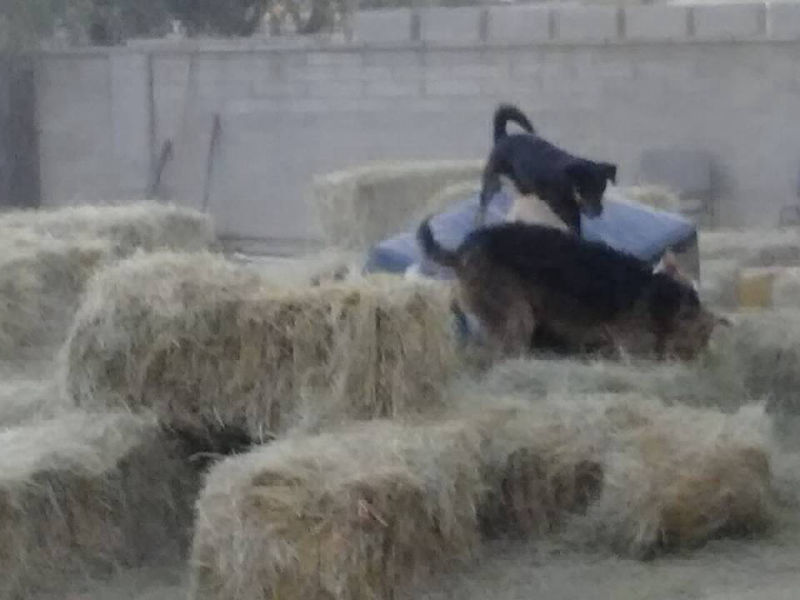
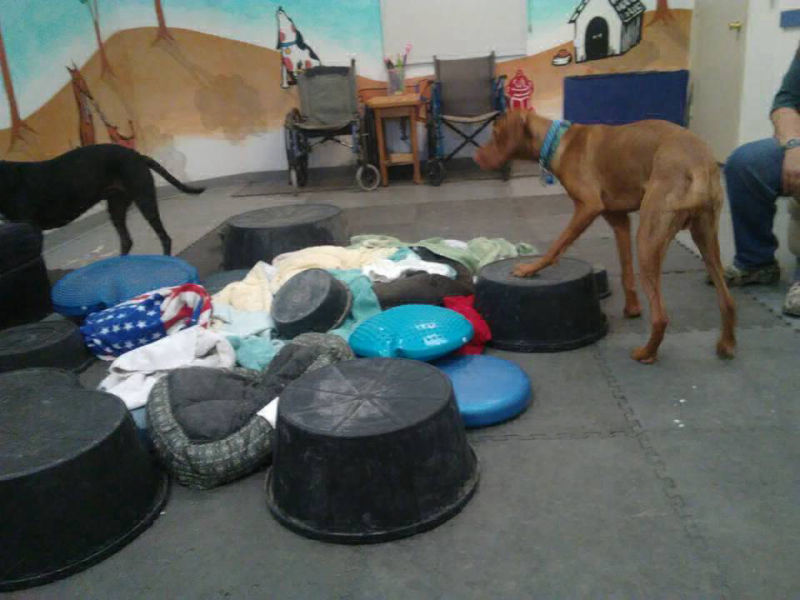
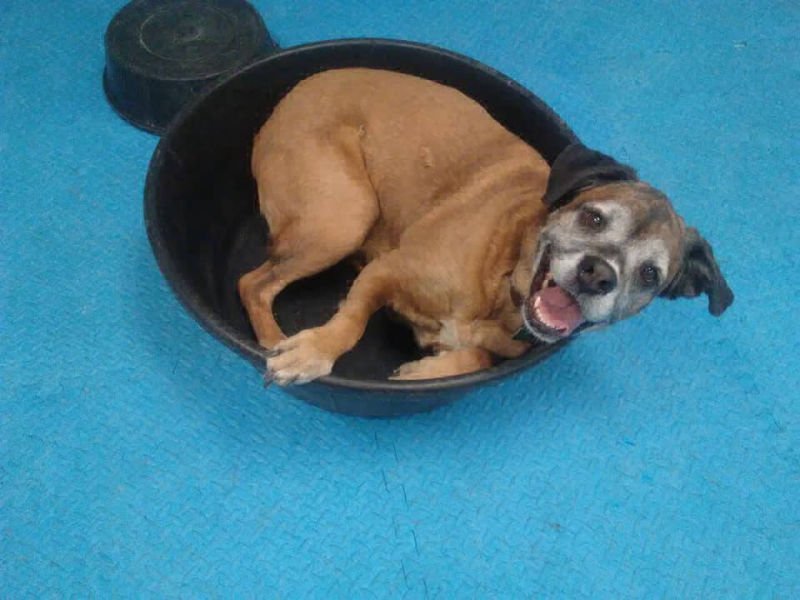
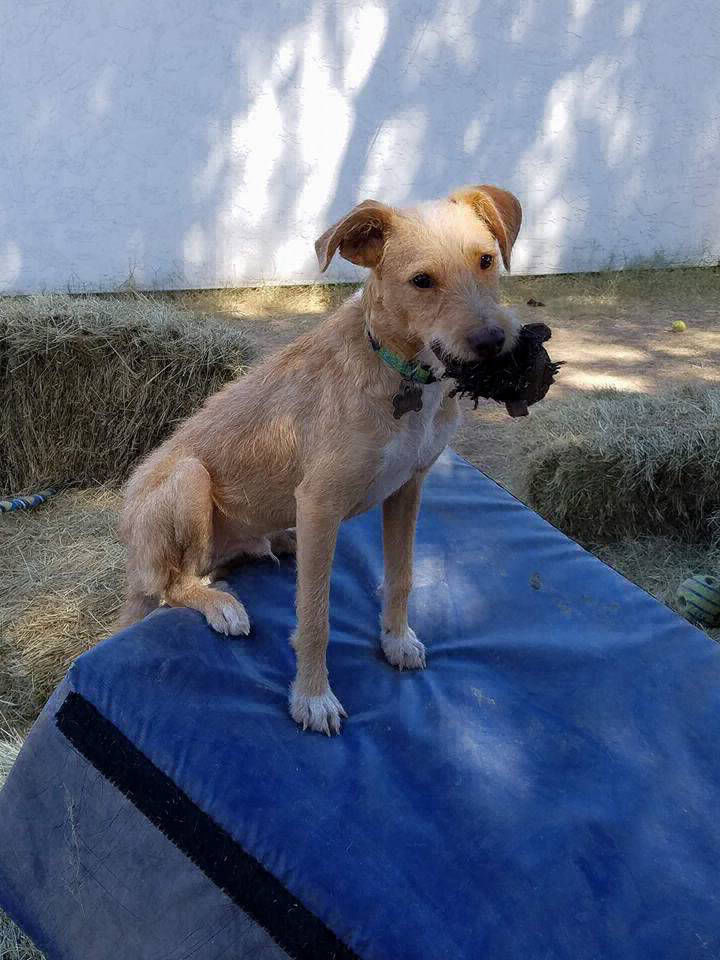
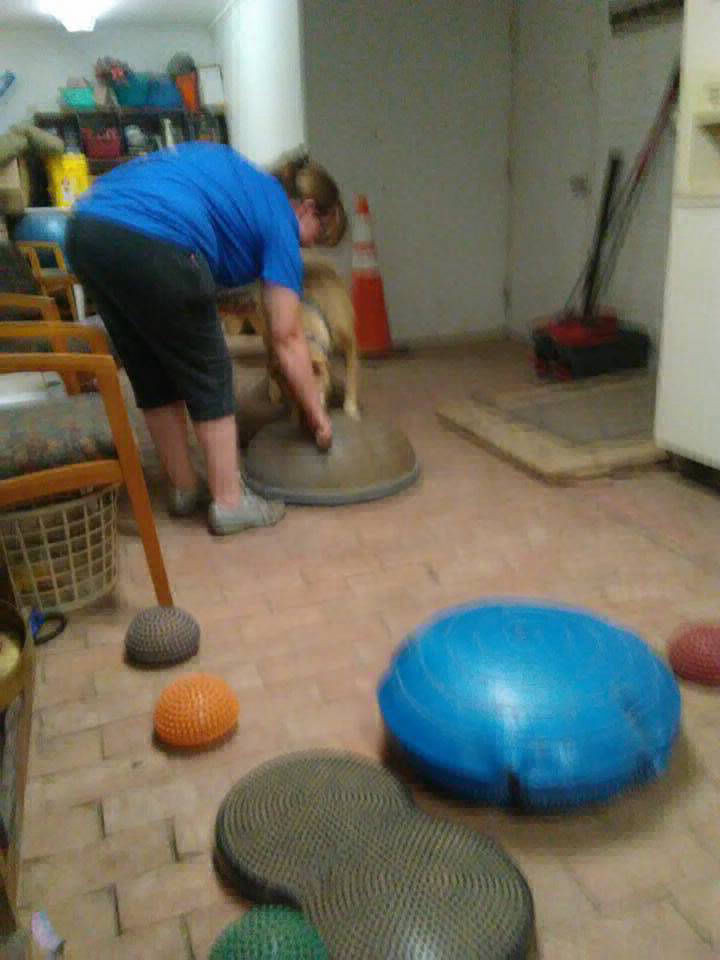
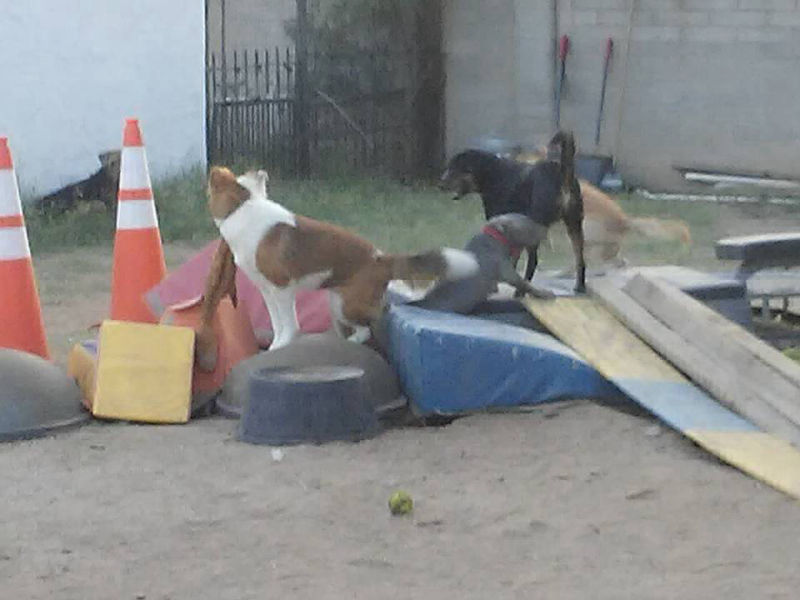
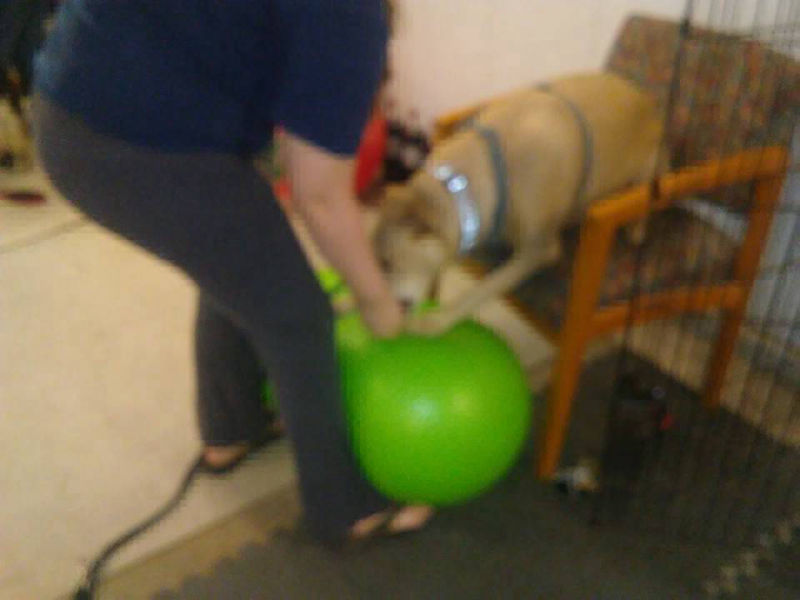
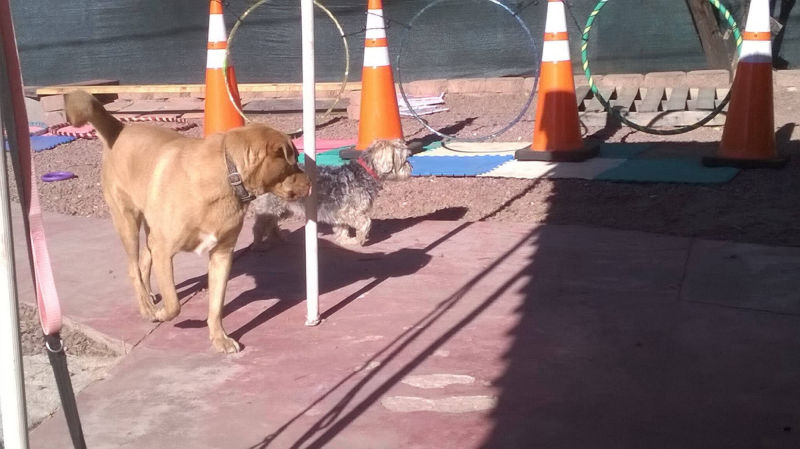
Fitness is a dog's ability to perform physical activities both static and dynamic. These activities generally require endurance, strength, flexibility, balance and coordination as well as a general awareness of the environment those activities are being performed within.
Fitness usually denotes engagement in a combination of regular exercise and inherited talent and ability. Fitness is also a measure of a dog's ability to carry out those tasks he is assigned whether in the sporting, working, service or companion arenas. That measure is one of vigor, fatigue and energy. Fitness generally measures one's capacity for directed movement.
Fitness is often divided into following types:
Flexibility: This usually means joint movement, it's range and fluidity. Some flexibility has a lot to do with body composition however, the more excess weight a dog might have will reduce the range of motion.
Endurance: Endurance is usually measured by aerobic capacity. This means how long a dog can run or chase or do quick movement exercises. However, in the last decade, humans have been reminded that mental challenge is just as exhausting as aerobic exercise. So endurance covers more then just aerobics. Endurance is the amount of time vs effort in any activity.
Strength: Weight training is a form of exercise for developing the strength and size of skeletal muscles which can provide significant functional benefits and improvement in overall health and well-being.
Agility: Agility is the ability to change the body's direction quickly and efficiently. Agility requires a sense of balance, the knowledge of body parts and how they move, coordinating movements between the dog and its environment, speed, and strength.
Balance: This includes body awareness, environmental awareness and proprioception in order to maintain the natural positions of the canine body without dizziness, loss of equilibrium or injury.
Speed: Speed is a measure of how fast the dog moves in the activity being done. Speed is measured by how much time it takes to go from rest to the end of the activity. That activity could be as simple as a stand to a sit. To get speed, the dog needs to be able to hear the cue, understand the cue and the action the cue signals and instantly react upon hearing it.
Task-oriented activity: There are many tasks and groups of tasks that we can ask of our dogs. A sport, any sport, is just a specific set of tasks and movements that have the purpose of going from A to B.
There are five things that I feel are the keys to fitness with any dog, no matter what their role in your life is.
Engagement. Engagement basically means that your dog is actively involved in the activity you and s/he are doing together. Once the dog is actively participating, there is a point where the dog is actually pushing the handler. This intended outcome is what is desired during every interaction. Engagement cannot be achieved without a sound dog. Fitness is an important part of creating an engaged dog. Anything that is unsound will cause internal distractions and thus, no engagement.
Aerobic Activity. Some dogs love to run, others don't. Some dogs thrive on long straight walks and others need to stop at every tree and hydrant, chase a butterfly and roll in the grass. All of this for a dog, is aerobic activity. Anything that gets the dog moving, breathing, engaging with the environment and you can be considered aerobic. The heart pumps a bit harder, the lungs grab more air, the muscles work harder and endorphins abound.
Rhythm and Flow. Structure gives rhythm to our dogs lives. That structure also covers the composition and structure of your dog's body. When parts are out of alignment, there can be little flow to movement. All the exercises we do in the Fitness classes bring structure, rhythm and flow to our dogs.
Problem Solving. Canids are great problem solvers. A fact that is missing in most training endeavors. They really can figure out what you want them to do and be willing to do it on cue. There is really no need for moving the dogs body via your hands, a leash or some other tool. Even luring isn't necessary once your understand that dogs can think, can process the environment and due what seems necessary. But like engagement, the ability to problem solve is dependent on not having the distractions of an unfit or ill body.
Live Life: Dogs should be allowed to be dogs, to live life according to their evolutionary functions and propensities. Obviously we don't want them digging up the garden, chewing on the furniture or reliving their ancestors daily activity of scavenging in the nice smelly garbage. But dogs should be allowed to use their noses, roll in "stuff", play with other dogs, socialize with other species, and chase and eat bugs.